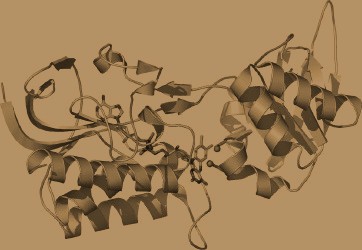SelenoproteinsThioredoxinReductase
Recerca en genomes de protistes
Inici: Abstract
Es consideren selenoproteïnes aquelles proteïnes que presenten un aminoàcid de selenocisteïna a la seva seqüència proteica. Aquest aminoàcid es representa amb la lletra U i és la forma biològica majoritària de l'element traça seleni. Tot i que el triplet UGA generalment codifica per un codó d'aturada de la traducció, en certes ocasions es produeix una recodificació que resulta en l'aparició d'una Sec. Per aquesta raó, aquests aminoàcids són generalment mal anotats, fet que dificulta la recerca i identificació de noves selenoproteïnes al genoma de nous organismes seqüenciats.
La recodificació del codó UGA ocorre degut a la presència d'una estructura 3D a l'extrem 3'-UTR dels gens que codifiquen per aquestes proteïnes. Aquesta estructura s'anomena element SECIS i actua reclutant diversos factors de trasncripció que s'uneixen a un tRNA que incorpora una selenocisteïna a la seqüència aminoacídica.
El següent estudi té com a objectiu la detecció de selenoproteïnes de la família de les Thioredoxin reductase al genoma de protistes seqüenciats durant els anys 2009 i 2010.
L'anàlisi ha resultat en la troballa de 3 selenoproteïnes de la família TR i 3 homòlegs en cisteïna als protistes de 2010, mentre que en als genomes de protistes del 2009 hem trobat 7 Thioredoxin reductases, 3 amb l'aminoàcid selenocisteïna i 4 amb homòlegs en cisteïna.
Selenoproteins are those proteins that contain a Selenocysteine amino acid (Sec) in their sequence. This amino acid is represented by letter U, and is thought to be the major form in which the element Selenium can be found. Although the TGA codon usually codifies as a STOP sign in the translational process; we may find a recodification phenomenon of the aforementioned codon, which results in the apparition Selenocysteine. This is the main reason why Sec is usually misannotated, which makes it even more difficult when it comes to search and identify new selenoproteins.
This recodification phenomenon is caused by the presence of a 3-dimensional structure located at the 3’-UTR ending of the genes that code for selenoproteins. This structure is referred to as “SECIS element” and it works by recruiting several transcription factors, which bind to the tRNASec, ending up with the addition of selenocysteine to the amino acid sequence.
The present study aims to detect new selenoproteins from the TR (Thioredoxin reductase) family in the recently-annotated genomes of several protists.
Our analysis has concluded with the findings of 3 TR selenoproteins and 3 Cysteine-homologues in protists whose genomes were annotated this year, in addition to the 7 thioredoxin reductases (3 selenoproteins and 4 cysteine homologues) that have been found in 2009-annotated protists.
Tornar a dalt
 Contact
Contact